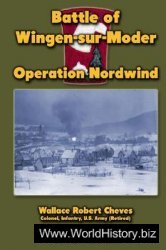In contrast to convicts under sentence, free settlers were quick to take advantage of land opportunities in the new colony intent on self-advancement as well as re-creating traditional social structures. The first phase of settlement was in the Southeast expanding to grazing lands beyond the Blue Mountains by 1820, and Melbourne in 1839. Wider settlement into the interior of the continent from the 1850s was spearheaded by prospectors looking for more gold, and explorers followed by pastoralists seeking grazing land. Missionaries, traders, and other ethnic communities followed and settled - missionaries wherever they could find Aboriginal souls to save, the Chinese in and around goldfields, Afghans providing camel transport to new settlements. Permanent and intermittent coastal settlements also continued - Asians along the north coast seeking trochus, pearl, and beche de mer, mixed communities in sealing and whaling settlement along the south. Archaeology can reveal a variety of ethnic, cultural, gender, and power relationships as well as colonist lifestyles: it has the capacity to explore the settlement system more fully since it is not confined to those with the written word such as servants and laborers, foreign immigrants, and most notably indigenous populations.
Archaeology made an early start on the colonial mansions, symbols of colonial power with elegant material culture, carrying out heritage assessments and conservation works, sometimes with minimal excavation. Some of these detail their owners’ ingenuity, enterprise, and management practices: at Elizabeth Farm Parramatta and Camden Park, two contrasting homes of the powerful Macarthur family, excavations reflect their owners’ commitment to the colony and their own aggrandizement within it. Others, now ruined, have been more extensively excavated. Jamison’s estate at Regentville (1824-69) was founded on cattle, and well details the creative energy of these early settlers - the innovative flushing closet, his impressive Mason’s ironstone dinner service, the terraced vineyards, the new steam mill technology, and the complex linkages of Jamison properties from his city residence, via the grand house on the Nepean River to his inland pastures. James King, a settler who set up his pottery manufactory of Irrawang in the Hunter Valley about 1830 to provide high-quality domestic wares at prices little higher than imported wares, displays the same restless innovative energy as Jamison, and seems to reflect the new business practices of the great Josiah Wedgwood. At Lake Innes House excavated finds from servants’ cottages suggested more conservative practices, a British model for land owner-servant relationships.
Dundullimal station near Dubbo, built of wooden slabs in c. 1842, was typical of early properties further inland. By the 1880s, money from gold finds as well as pastoral exports had brought prosperity and bigger houses: and the succession of homesteads such as at Saumarez, near Armidale, document the grandeur of the settlers’ ambition. By contrast, in the interior, where pastoral expansion rapidly followed 1860s-70s exploration and gold rushes, grandeur yielded to function. New pastoral stations, set in leases covering thousands of hectares, were sometimes larger than English villages with housing and services for livestock, managers, stock-workers, and families. The archaeological research of today, whether of coastal or interior pastoral settlements, probes the total station system - homesteads, outhouses, and workers’ quarters of shepherds, gardeners, or stockmen: employed, assigned, or convicts; Aboriginal or white - and includes the Aborigines on whose labor most employees depended.
Less visible in the landscape is the spread of missions throughout the interior and especially northern Australia and the Torres Strait to save the souls of the Aboriginal people encountered. Anglican, Catholic, and Lutheran missionaries were key players, and the mission stations they established became centers for rations distribution, religious conversions, and culture change. For example, the early layout of the cemetery at Benedictine New Norcia (founded 1846) visibly embodied its hierarchical structure while at Killalpaninna Lutheran Mission (1866-1916) Aborigines and missionaries were buried separately, on either side of the church. The significant records of indigenous cultures during this time of change generated at numerous missions have been extensively studied: many of the sites retain potential. Survey at Killalpaninna demonstrated, perhaps for the first time archaeologically, how complex this cultural interaction was as it played out across the landscape.
The sparse pattern of European occupation has sometimes left short-lived settlements that can be studied archaeologically. Every kind of mining rush had its initial tented camps near the diggings: camps of Chinese immigrant workers are especially visible. Most were abandoned as alluvial workings gave way to less mobile reef-mining operations, which were sometimes the start of more permanent mining townships. Construction camps arose for roads, railways, dams, and canals, even the Snowy River scheme, and were then abandoned. Even official settlements did not always survive. A few, such as Corinella, Risdon Cove, Reeves Point, and Somerset were conceived as permanent, others such as Fort Dundas (1824-28) and Port Essington (1839-49) were outposts set up only for diplomatic, strategic, or commercial reasons. Some of these sites, earlier investigated by archaeologists, are now being revisited. More recent research goes beyond confirming historical sources to investigate power relationships revealed in spatial details, sharing of resources, efficiency, work management, and changes over time.




 World History
World History





![The General Who Never Lost a Battle [History of the Second World War 29]](/uploads/posts/2015-05/1432581983_1425486253_part-29.jpeg)



